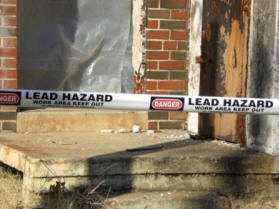Alabama
Objective: Assess the effectiveness of the state’s efforts to reduce childhood lead poisoning by providing outreach and education (O&E) on the Environmental Protection Agency’s (EPA) Lead Based Paint Regulations View the 2008 Alabama Logic Model Abstract: The purpose of the evaluation is to assess lead poisoning prevention efforts in Alabama, particularly, regarding training the contractors certified in lead abatement work. Currently, Safe State, operated through the University Of Alabama College Of Continuing Studies, audits and approves lead abatement training programs. Information on the EPA regulations enables tenants and buyers to make informed housing choices concerning potential lead poisoning hazards, and provides more pressure on housing providers to comply with lead-based paint regulations. By focusing on ways to evaluate their outreach, Alabama will gain the tools to measure and ultimately improve their education efforts. There are currently four areas of regulation to reduce the risk of childhood lead poisoning from residential lead-based paint. The last regulation was finalized in April 2008. The state has specific demographics and “high risk areas” where elevated BLLs have either been reported or are suspected. Because there are low levels of the number of screening occurring, areas are usually targeted based on older housing stock and the prevalence of children younger than 6 years living in poverty. This evaluation will focus on Alabama’s general O&E and specific actions provided for targeted audiences. Other specific information will be provided by the state. A thorough evaluation of both the general and targeted education is necessary to ensure the most effective use of resources.  < 2008 Program Evaluation Projects
< 2008 Program Evaluation Projects

- Page last reviewed: June 1, 2009
- Page last updated: June 1, 2009
- Content source:
National Center for Environmental Health, Division of Emergency and Environmental Health Services


 ShareCompartir
ShareCompartir